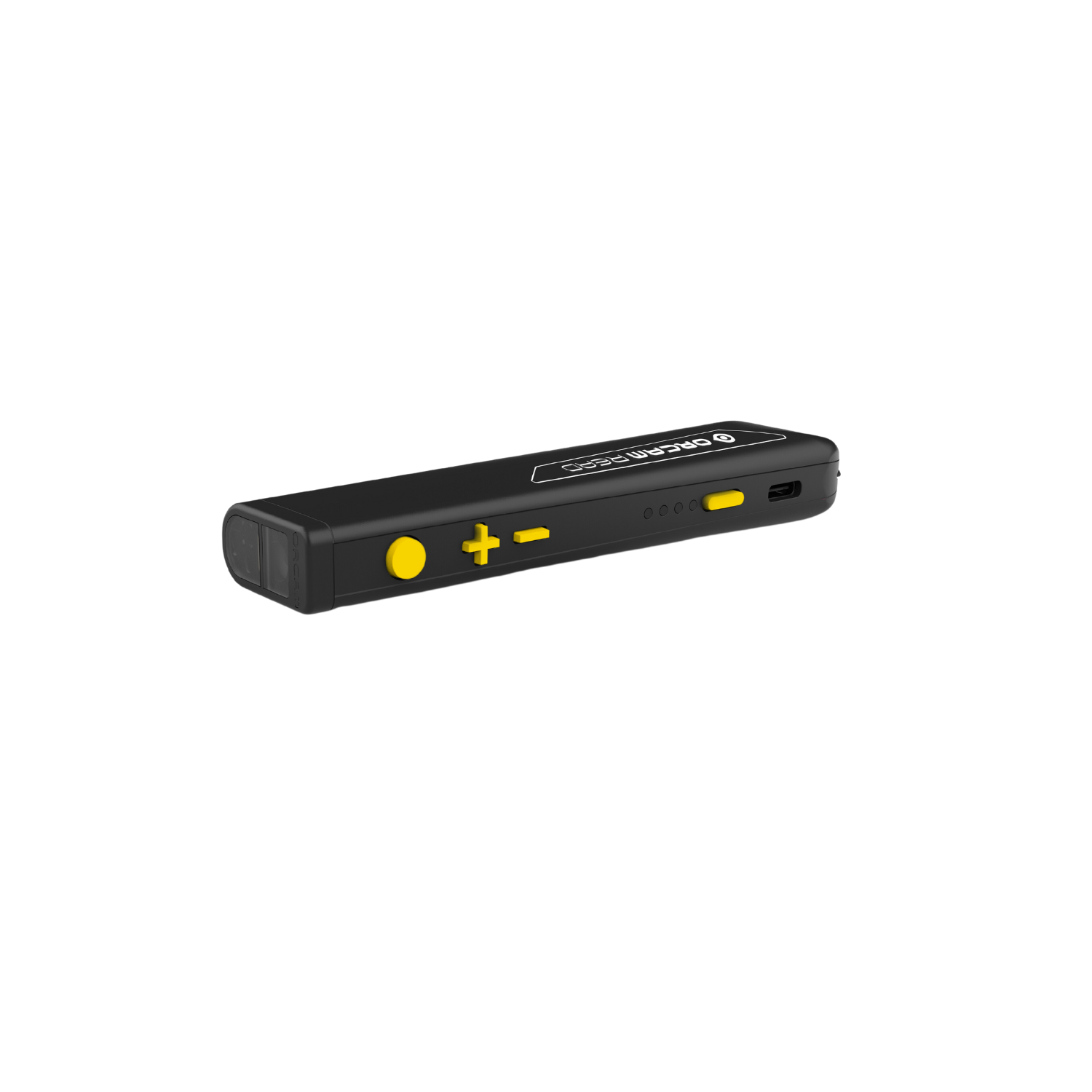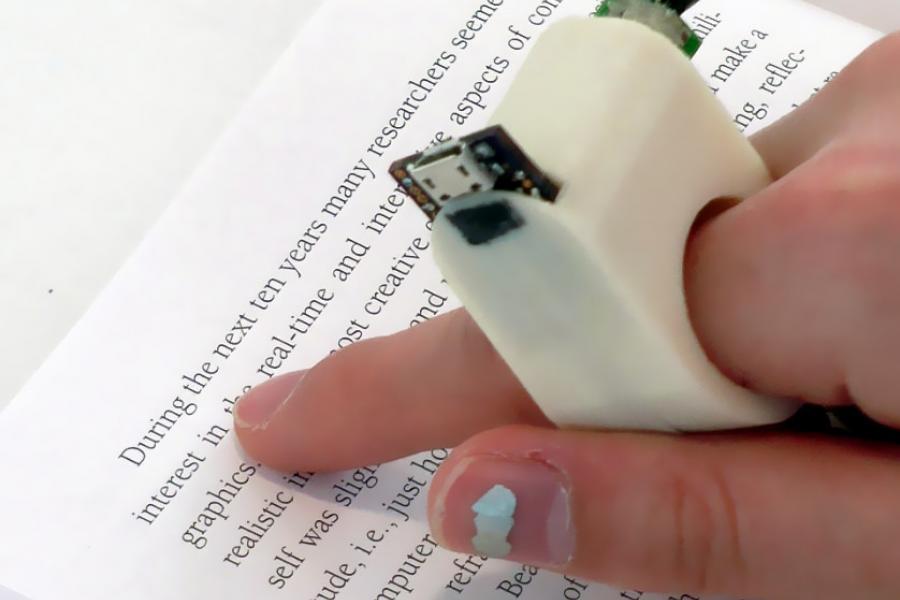AI-Powered Visual Aids: Enhancing Autonomy for Blind Users
AI-Powered Visual Aids: Enhancing Autonomy for Blind Users
Blog Article
A Guide to Life-altering Assistive Modern Technology for the Blind and Visually Impaired
The development of assistive technology has actually ushered in a transformative period for individuals who are blind or aesthetically damaged, offering devices that improve freedom and enrich daily experiences. Developments such as clever navigating devices and AI-driven applications are redefining exactly how customers interact with their environments, while available analysis remedies and smart home innovations assure to more elevate the high quality of life. As these innovations continue to advance, one need to consider not just their performances yet also their influence on promoting self-reliance and inclusivity. What does this mean for the future of access?
Smart Navigating Equipment
Smart navigating tools are revolutionizing the method individuals who are blind or aesthetically impaired engage with their environment. These sophisticated technologies, which incorporate general practitioners, audio comments, and haptic signals, offer customers with important info regarding their surroundings, improving their freedom and flexibility.
One prominent example is the use of smart canes outfitted with sensors that spot obstacles and provide real-time feedback with vibrations or audio hints. These tools permit customers to navigate complex settings, such as busy streets or crowded public rooms, with raised self-confidence. Furthermore, wearable devices, such as smart glasses, are being established to aid in identifying faces, reviewing text, and recognizing items, further augmenting the customer's spatial recognition.
In addition, smart navigating tools are increasingly including expert system to examine information and adjust to users' choices. This tailored strategy not only boosts navigation performance however likewise promotes a sense of empowerment amongst users. As technology remains to breakthrough, the potential for clever navigation devices to create an extra inclusive and available world for people who are visually damaged or blind continues to be appealing, eventually reshaping their daily experiences and interactions.
Ingenious Mobile Apps
Mobile applications are emerging as powerful devices for assisting people that are visually damaged or blind, offering a variety of functionalities that enhance daily living. These apps harness advanced innovation to promote daily jobs, improve accessibility, and advertise self-reliance.
One group of innovative mobile apps focuses on visual recognition. Applications like Be My Eyes connect users with sighted volunteers via video clip telephone calls, enabling real-time help for tasks such as reviewing labels or browsing unknown environments. Apps like Seeing AI utilize artificial knowledge to explain surroundings, read text, and recognize items, providing users with important details at their fingertips.
One more substantial location is navigation and orientation. Apps such as Aira and Close-by Traveler provide audio advice, aiding users navigate city spaces easily. They offer customized aid, enabling for a more positive expedition of the atmosphere.
Furthermore, health and wellness applications deal with particular needs, such as drug monitoring and physical fitness monitoring. These applications aim to foster an alternative strategy to wellness, making certain that individuals can keep their health and wellness separately.
Wearable Assistive Instruments
Wearable assistive gadgets represent a substantial innovation in technology created to support people who are blind or aesthetically damaged. These devices improve flexibility and self-reliance by providing real-time responses about the surrounding setting. Among the most noteworthy wearable innovations are clever glasses equipped with sensors and electronic cameras, which can determine barriers and relay vital information with sound cues.

One more ingenious option includes wrist-worn devices that use ultrasonic waves to discover challenges and offer navigational support. These tools often come with customizable settings, enabling users to customize the alerts to their certain needs.
The combination of artificial knowledge in wearable assistive modern technology is additionally significant, as it continuously improves the precision and responsiveness of these gadgets. Generally, wearable assistive devices are transforming the lives of the visually damaged and blind, promoting greater autonomy and enhancing lifestyle via cutting-edge solutions.
Accessible Checking Out Solutions
Accessible analysis remedies play an essential duty in allowing individuals who are blind or visually impaired to engage with message throughout different layouts. These solutions encompass a range of devices and innovations designed to enhance analysis experiences, from traditional print products to electronic web content.
One noticeable solution is Optical Personality Acknowledgment (OCR) technology, which converts published text into digital style, enabling users to listen to or read the content using screen readers. Furthermore, specialized e-readers furnished with text-to-speech capacities use customizable reading experiences, allowing users to adjust font sizes and background colors for improved visibility.
Another reliable method is braille display screens, which provide tactile comments by converting electronic text into braille. This allows individuals to check out touch, promoting greater independence and accessibility to literature. Mobile applications created for reviewing checked files or books can empower users with instantaneous access to a large library of materials (Wearable technology for low vision).

Smart Home Technologies
Smart home technologies have actually revolutionized the means individuals who are aesthetically damaged or blind communicate with their living atmospheres, enhancing both independence and safety. These ingenious remedies leverage automation and connectivity to produce an accessible living area tailored to the demands of individuals.
Smart speakers and voice-activated assistants give hands-free control over different devices, permitting users to change illumination, safety, and temperature level actions with easy voice commands. This performance lessens dependence on sighted help and cultivates a sense of freedom. Additionally, smart lighting systems can be customized to deliver auditory feedback or responsive signs, making it Mobility aids for visually impaired users possible for people to browse their homes a lot more effectively.
Moreover, security systems equipped with smart electronic cameras and sensing units can send out real-time signals to individuals, enhancing personal security without requiring visual verification. Automated door locks use comfort, permitting customers to secure their homes easily.
Incorporating wise home technologies not just boosts everyday living but also motivates social communication through connected tools - Smart glasses for the visually impaired. With ongoing advancements in assistive technology, the future shows up appealing, as more remedies will arise to additional equip individuals who are visually impaired or blind, ensuring an extra independent and comprehensive way of life
Conclusion
Finally, the innovations in assistive modern technology for the aesthetically damaged and blind represent a considerable jump towards enhancing self-reliance and top quality of life. Smart navigation tools, cutting-edge mobile applications, wearable devices, easily accessible analysis solutions, and wise home modern technologies collectively cultivate a comprehensive setting. This assimilation of modern technology not only enhances movement and everyday living however likewise equips people to involve completely with their environments, advertising higher freedom and involvement in society.
Advancements such as smart navigation devices and AI-driven applications are redefining how users interact with their surroundings, while available reading solutions and wise home technologies guarantee to further raise the top quality of life. As innovation proceeds to advancement, the potential for smart navigating devices to produce a more inclusive and accessible world for individuals who are blind or aesthetically damaged continues to be encouraging, eventually reshaping their daily experiences and communications.
Wearable assistive gadgets represent a substantial innovation in innovation developed to sustain people who are blind or aesthetically damaged. Among the most remarkable wearable innovations are smart glasses outfitted with electronic cameras and sensing units, which can determine barriers and relay critical info through sound cues.
Smart navigation tools, cutting-edge mobile applications, wearable gadgets, obtainable analysis remedies, and smart home innovations jointly cultivate an inclusive environment.
Report this page